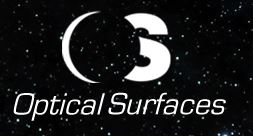When dispatching coated optics it is paramount to ensure that they are clean and dust free. Depending on the environment they are deployed in, over time, they may become spoiled with dust and stains. Contamination of the optics can cause light scattering and impurities on the optical surface, what’s more is dust and stains can react with incident light resulting in damage to optical coatings.
.jpg)
Cleaning Coated Optics
Typically, the general rule, where coatings are concerned is, “If it’s not dirty don’t clean it.” The set of instructions outlined in this article should only be carried-out as a last resort. Alternatively, the mirror can be returned to Optical Surfaces Ltd. and cleaned at a minimal cost. However, if the only available option means cleaning the optic on site, the optics should be handled in a clean, low dust environment. Additionally, wear a facemask, powder free latex gloves, and some sort of head wear to minimize the risk of further contamination whilst cleaning the mirror.
Cleaning a protected aluminum coating should only be attempted as an extreme due to the elevated risk of marking or smearing the coating. Of course, this depends on what has contaminated the mirror and the intensity of the cleaning process needed to remove the debris.
Cleaning Procedures
If the mirror is mounted, it will not be possible to drag-wipe which raises the chances of picking-up contaminants around the edge. The following instructions are the cleaning methods you should go through, listed in a step-by-step format, becoming progressively more aggressive as required:
Step 1: It is recommended that a can of compressed air (such as one used for the cleaning of computer internals) be used. However, proceed with caution and only use for short bursts as sometimes the propellant in the can permanently stains the mirror if over applied in one go, you will notice the can go colder. [1]
.jpg)
Step 2: When contaminant debris is minimal and confined to a small area, use a cotton bud to gently remove particles deposited on the mirror surface. [2] If at any point during this process smearing occurs, you can use a small amount of Isopropanol and cotton wool to further clean the stain or smear. It is extremely important that further smearing is avoided during this process. [3] [4]
.jpg)
Step 3: When faced with a mirror that is dirty all over, ensure that it is removed from its mount and then you can attempt drag wiping the surface with a large tissue and Isopropanol.
Placing the tissue on the mirror’s edge furthest away, apply the solvent to the far edge of the tissue then promptly drag the tissue across the face of the mirror. This should be carried out at a rate where the alcohol evaporates visibly and rapidly. This is the best method of cleaning but requires careful practice to avoid smear lines.
Step 4: Failing the previous method, the last resort is also the most hazardous and aggressive method of cleaning. Using only quality cotton wool of the highest quality (it should not have fragments of wood in it) test an area at the edge first. Drip some acetone or Isopropanol onto a small cotton wool pad and work into a small area to see what effect this has on the mirror. [5]
.jpg)
Steer clear of applying pressure on the pad or you could severely mark the coating. If this technique proves to be effective, a larger cotton wool pad can be used to wipe the whole surface. Make sure to continually replenish the cotton wool to avoid smearing the contaminants across the surface.
When the cleaning process is completed drag-wipe to eliminate the smears. It is worth noting that this method will more than likely mark the coating and, in some cases, will ruin it, but it is very likely a new coating is required if the surface is dirty enough to necessitate repeated aggressive cleaning.
Step 5: If after following the cleaning steps above and the results are ineffective then it is recommended that the mirror be returned to Optical Surfaces Ltd. who will again attempt to clean the mirror. If necessary, Optical Surfaces Ltd. will also provide a quote for stripping and re-coating of the mirror(s).

This information has been sourced, reviewed and adapted from materials provided by Optical Surfaces Ltd.
For more information on this source, please visit Optical Surfaces Ltd.